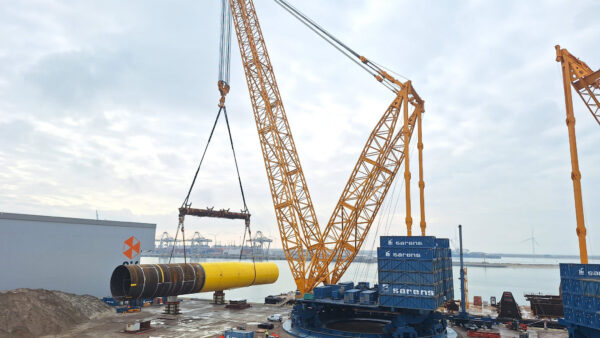A company that makes tidal power turbines in Scotland has won a C$4m contract to install 15 of its machines in the waters of Nova Scotia, Canada in the latest attempt to realise the dream of generating power from the vicious tides of the Bay of Fundy.
An earlier attempt in 2009 saw a large turbine shredded by the high-velocity currents of the bay, which has the highest tidal range in the world.Â
Some 160 billion tonnes of water flow in and out twice a day, which the government believes represents a generating capacity of at least 2.5 gigawatts of clean energy.
Canada is betting that the smaller, aquadynamic profiles of Nova Innovation’s turbines, manufactured in Edinburgh, Scotland, will allow them to withstand the violent tides.
Announced on 9 September, the contract sees Nova Innovation at first install just one of its 100kW M100 D turbines on the sea floor of Petit Passage in southwestern Nova Scotia, near the giant mouth of the bay.
Its performance will be monitored before another four are added in 2021, followed by another 10, making a total of 15 turbines by 2023, giving the array a generating capacity of 1.5MW. Nova Innovation has been operating three of these turbines in the Shetland Islands in Scotland since 2016.

Canada is betting that the smaller, aquadynamic profiles of Nova Innovation’s turbines will allow them to withstand the violent tides (Nova Innovation)
It is a modest installation, but Canadian fisheries and oceans minister Bernadette Jordan said it was a step toward building a “thriving tidal power industry across Canada”.
“With the longest coastline in the world, Canada should be a global leader in tidal energy,” she said. “This renewable energy source has the potential to substantially grow our blue economy in the long term, but we need to invest now.”
Kim MacNeil, Nova Innovation’s head of North American business development, said: “Canada’s investment reflects the growing confidence worldwide in our technology and our ability to operate it in extremely challenging environments. It will be a huge step forward for tidal energy in Nova Scotia and Canada.”
In the first attempt in 2009, a much bigger, 10-tonne turbine was installed on the floor of the Minas Passage, near the head of the bay where currents are twenty times faster than at Petit Passage, reports CBC.ca.
Within 20 days all 12 of the turbine’s rotor blades were destroyed by 10-knot currents.
Top photograph: Low tide in the Minas Basin, Bay of Fundy, Nova Scotia. Some 160 billion tonnes of water flow in and out of the bay twice a day (LeonardoDog/CC BY-SA 4.0)
Further reading:










